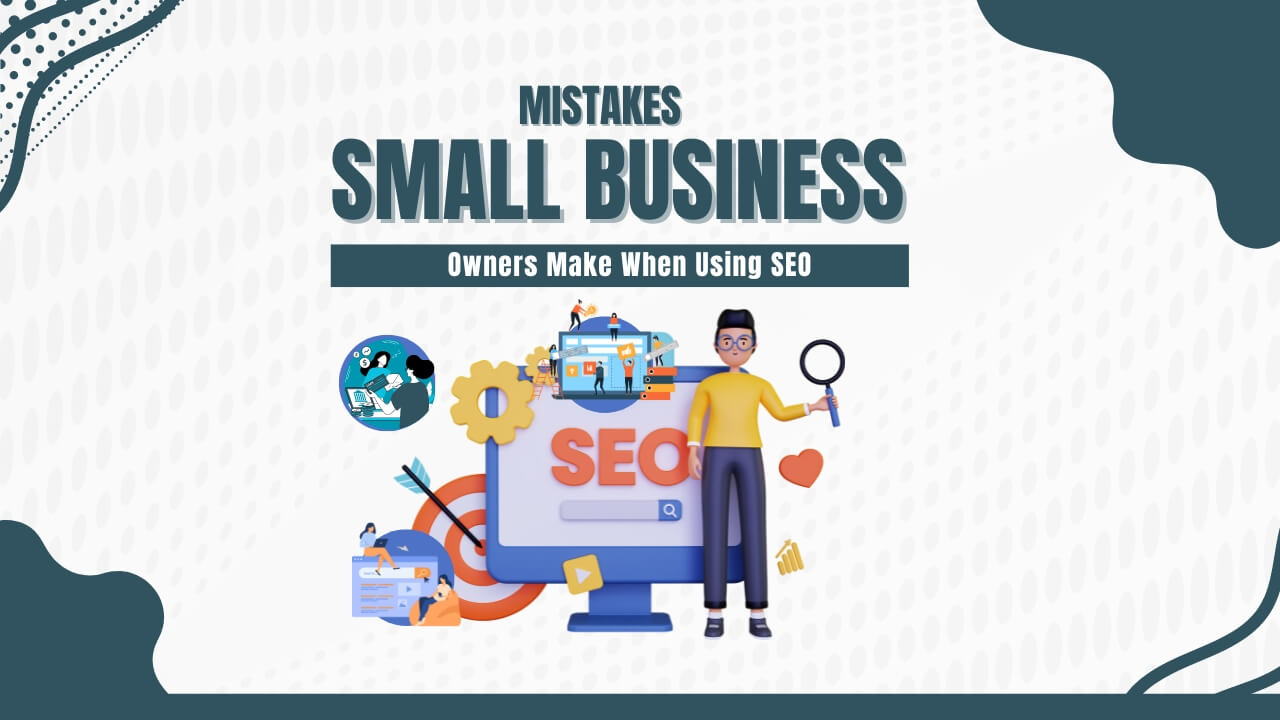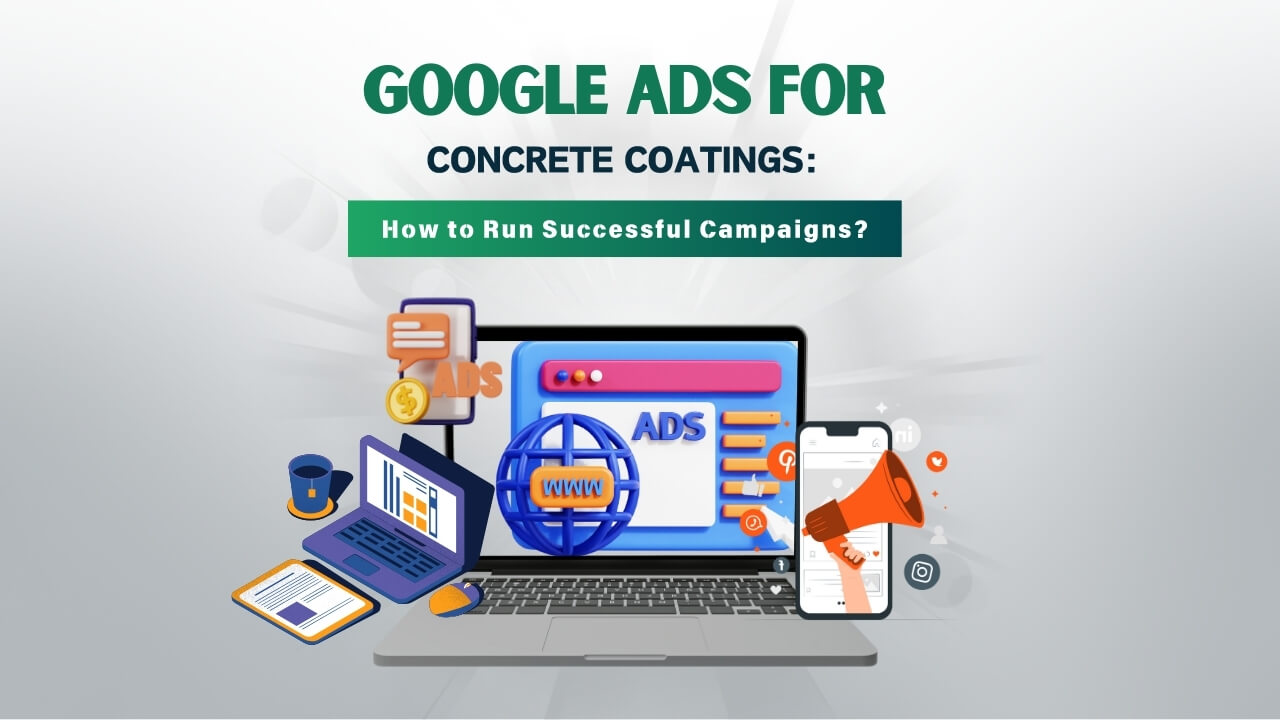Online advertising has become one of the effective tools for businesses aiming to reach their target audiences effectively in this digital era. With a number of platforms available in the market choosing the right one is very important for maximizing returns on advertising investments.
Further in this blog post, we’ll be looking into two prominent advertising platforms that are Google Ads and Yelp Ads so stay tune with Sujit Shukla.
Online advertising comes with various effective strategies and platforms, which is being effectively used by businesses to promote their products or services online.
This mainly includes search engine marketing (SEM), social media advertising, display advertising, and more. As consumer behavior is the main cause of the shift towards digital channels, online advertising has become a cornerstone of modern marketing strategies.
Importance of Choosing the Right Platform for Advertising
Selecting the right advertising platform is very important for achieving marketing objectives efficiently. Factors such as target audience demographics, budget, campaign goals, and the nature of the product or service plays a vital role in determining which platform is better for your business.
Making an informed decision ensures that resources are allocated effectively and campaign performance is optimized.
Introduction to Google Ads and Yelp Ads
- Google Ads: Google Ads, also known as Google AdWords, is an online advertising platform that allows businesses to display ads on Google’s search engine results pages (SERPs), as well as across its other extensive partner websites.
With Google Ads, advertisers can easily create text, display, video, and app install ads, targeting users based on keywords, demographics, interests, and other parameters. - Yelp Ads: Yelp is an online advertising platform which provides user-generated reviews and recommendations for local businesses. Yelp Ads enables businesses to promote their listings on the Yelp platform, increasing visibility to potential customers who are actively seeking local products or services.
Yelp Ads offers various ad formats which includes search results, display ads, and enhanced profiles, allowing businesses to target users based on the specific location, search intent and User behavior.
Further we’ll look into the features, advantages, and limitations of Google Ads and Yelp Ads, comparing key metrics and providing insights of both the platforms which will effectively help businesses to make informed decisions regarding their online advertising strategies.
Understanding Google Ads
Google Ads is the most powerful online advertising platform offered by Google, designed to help businesses reach their target audience through various ad formats across all the Google networks.
As you have got to know a brief understanding of Google ads Let’s us now delve into the intricacies of Google Ads:
Explanation of Google Ads Platform
Google Ads, also known as Google AdWords, as we have already discussed in the other blogs as well, mainly operates in the pay-per-click (PPC) model, where advertisers bid on the relevant keywords of their products or services to display ads in Google’s search results and partner websites.
Google ads provides a user-friendly interface for creating, managing, and optimizing effective advertising campaigns.
Types of Ads Available on Google Ads
- Search Ads: Text-based ads are basically those ads that appear above or below Google search results when users enter any relevant search queries. These ads are only shown by using specific keywords and are highly targeted on the user search intent.
- Display Ads: Visual ads appear in the form of images or banners within Google’s Display Network. Display ads can be targeted based on demographics, interests, and Users browsing behavior, allowing advertisers to reach a broader audience beyond the search intent results.
- Video Ads: Video-based advertisements are those advertisements which appear on YouTube and other partner sites within the Google Display Network. Video ads are basically of two types that are skippable or non-skippable and not only that it offers various targeting options to reach their targeted audiences based on interests, demographics, and viewing habits.
- Shopping Ads: Product-based ads are those ads which showcase specific products with images, prices, and other details directly within Google search results. Shopping ads are mainly preferred by Ecommerce businesses looking to promote their products and drive effective sales.
- App Ads: App Ads are those ads which are mainly designed to promote mobile apps across Google’s network, including search, display, and YouTube. App ads can effectively drive app installations, engagement, and in-app actions, helping businesses increase their app’s visibility and user base.
Targeting Options and Customization Features:
Google Ads provides robust targeting options and customization features to help advertisers reach out their targeted audience:
- Keyword Targeting: Advertisers can target the keywords which are relevant to their products or services, ensuring their ads are shown to users who are actively searching for that particular product or related to it.
- Audience Targeting: Google Ads offers various audience targeting options, based on demographics, interests, behaviors, and remarketing lists, allowing advertisers to tailor their ads to the specific audience segment.
- Location Targeting: Advertisers can also target their users based on their geographic location, allowing them to effectively target and to reach out the audience based on the specific location.
- Ad Customization: Google Ads allows advertisers to create highly customized ad creatives, including ad extensions, ad formats, and ad messaging, to improve the ads performance.
Pros and Cons of Using Google Ads for Advertising
Pros:
- Massive Reach: Google Ads enables advertisers to reach a wide range of audience who are actively searching for products or services, offering unparalleled visibility and exposure.
- Highly Targeted: With precise targeting options, advertisers can effectively tailor their ads to specific audience segments, ensuring maximum relevance and engagement.
- Measurable Results: Google Ads provides comprehensive analytics and reporting tools, allowing advertisers to track their ad performance, measure key metrics, and effectively optimize the campaign based on the result.
- Flexible Budgeting: Google Ads has a flexible budgeting option, allowing advertisers to set their budget, adjust bids, and control costs based on their advertising objectives and financial budget.
Cons:
- Competition and Costs: Due to the auction-based bidding system, popular keywords are mainly highly competitive, leading to the higher costs per click (CPC) leading to higher advertising expense.
- Complexity: Google Ads can be a complex factor for beginners, as it requires time and expertise to master its features and optimization strategies effectively.
- Ad Fatigue: Users may become frustrated by continuously seeing the ad in Google, leading to ad fatigue and reduced effectiveness over time if ads are not by the new content and ideas.
Overall, Google Ads is one of the powerful platforms for businesses to effectively reach their targeted audience and drive measurable results through various ad formats and targeting options.
By understanding its features, advertisers can effectively leverage Google Ads to enhance their online advertising and to achieve their marketing goals effectively.
Exploring Yelp Ads
Yelp Ads is an advertising platform for businesses, particularly those operating in local markets. Let us understand its features, targeting capabilities, and advantages compared to Google Ads which will help you to make an informed decision.
Overview of Yelp as a Review Platform
Yelp is one of the leading platforms for the user generated reviews, and it is highly recommended for local businesses.
It provides consumers with valuable insights into businesses quality, service, and overall experience, helping them to make an informed decision.
With millions of reviews covering various industries and locations, Yelp has become one of the trusted partners for consumers who is continuously seeking to know about the effective performance of the business.
Introduction to Yelp Ads and Its Features
Yelp Ads allows businesses to promote their listings on the Yelp platform, increasing visibility and attracting potential customers. Some key features of Yelp Ads include:
- Sponsored Search Results: Paid listings that appear at the top of Yelp’s search results when users effectively search for the relevant keyword and phrases.
- Display Ads: Visual advertisements displayed on Yelp’s website and mobile app, targeting users based on their search history, location, and interests.
- Enhanced Profiles: Upgraded business profiles with additional features such as a photo slideshow, call-to-action button, and removal of competitor ads.
- Deals and Special Offers: Businesses can create special deals and offers to attract Yelp users, encouraging them to visit or make purchases.
Different Types of Yelp Ads
- Search Ads: Paid listings is displayed effectively at the top of Yelp’s search results when users search for any keywords related to businesses or services.
- Display Ads: Visual advertisements that appear throughout Yelp’s website and mobile app, targeting users based on their browsing history, location, and interests.
- Sponsored Listings: Featured listings that appear prominently in relevant categories and search results, increasing visibility and attracting more attention from users.
Targeting Capabilities and Audience Reach
Yelp Ads offer robust targeting capabilities to help businesses to reach out their target audience and goals effectively:
- Location Targeting: Businesses can effectively target users based on their geographic location, allowing them to reach customers in their locality or by choosing specific areas.
- Keyword Targeting: Advertisers can effectively target the users based on specific keywords or phrases related to their business or industry, ensuring their ads are shown to the users who are interested in their products and services.
- Demographic Targeting: Yelp Ads allow advertisers to target users based on demographic factors such as age, gender, income level, and interests, ensuring ads are delivered to the most relevant audience segments.
Advantages and Disadvantages of Yelp Ads Compared to Google Ads
Advantages:
- High Intent Audience: Users on Yelp are often actively searching for local businesses or services, which has a high purchase intent and readiness to engage with ads.
- Local Focus: Yelp Ads are particularly effective for businesses who are effectively targeting their local market, as they help them to increase the visibility and to attract the customers within their Geographical location.
- Trusted Reviews: Yelp’s is one of the most trusted review platforms which enhances the credibility of businesses advertising on the platform, leading to increased trust and engagement from users.
Disadvantages:
- Limited Reach: As Compared to Google Ads, which has a vast reach across search, display, and video channels, Yelp Ads may only target limited audience reach, and may affect businesses who are relatively looking to target wider audience.
- Competition: Depending on the industry and location, competition for ad placements are relatively high, which indirectly increase the costs and potentially lower ad visibility.
Understanding the features, targeting options, and advantages of Yelp Ads compared to Google Ads is very important for businesses who are effectively searching to emerge in online advertising and to effectively reach their target audience and drive results.
By considering the unique benefits and limitations of each platform, businesses can seamlessly create an digital advertising strategy tailored to their specific objectives and target market.
Comparison of Key Metrics
In this section, we’ll be comparing the key performance metrics between Google Ads and Yelp Ads to know their effectiveness in the advertising. Understanding these metrics is essential for assessing the cost-effectiveness, reach, user intent, and tracking capabilities of each platform.
Cost-effectiveness
- Cost-per-click (CPC)
- Google Ads: CPC varies based on the keyword competition, ad placement, and quality score. Advertisers bid on keywords, and have to pay whenever the user clicks on the Ads.
- Yelp Ads: Yelp operates under a CPC model, where advertisers have to pay for clicks on their ads. CPC on Yelp varies depending on the factors such as industry competition and specific ad targeting options.
- Cost-per-acquisition (CPA)
- Google Ads: CPA measures the cost to acquire a customer or lead. It is calculated by dividing the total advertising spend by the number of conversions (e.g., purchases, sign-ups) generated.
- Yelp Ads: Similarly, advertisers can track CPA on Yelp effectively dividing the total ad spend by the number of conversions converted towards the Yelp Ads, such as calls, website visits, or reservations.
- Return on Investment (ROI)
- Google Ads: ROI measures the profitability of advertising campaigns by effectively calculating the revenue generated to the advertising costs incurred. Advertisers can effectively track the ROI using the conversion tracking and attribution models provided by Google Ads.
- Yelp Ads: Advertisers can calculate ROI on Yelp Ads by analyzing the revenue generated from Yelp-driven leads or conversions compared to the advertising expenses.
Reach and Visibility
- Impressions
- Google Ads: Impressions refer to the number of times that the ad is shown in the User feed. Google Ads has an extensive reach across search, display, and video channels, allowing advertisers to get a higher impression.
- Yelp Ads: Impressions on Yelp Ads represent the number of times ads are displayed to users on the Yelp platform. As compared to the Google ads, Yelp’s ads reach may be more localized compared, as it offers exposure to users actively seeking local businesses and services.
- Click-through-rate (CTR)
- Google Ads: CTR measures the percentage of users who are clicking on the ads after seeing it. The higher CTR indicates greater ad relevance and effectiveness.
- Yelp Ads: Similarly, Yelp Ads effectively track the CTR to gauge ad performance and engagement. Advertisers can effectively optimize the ad creatives and targeting to improve CTR and to effectively drive more clicks.
- Conversion rates
- Google Ads: Conversion rates measure the percentage of users who have completed the desired action, such as making a purchase or filling out the contact us form after clicking on an ad. Google Ads provides conversion tracking tools to effectively monitor the conversion.
- Yelp Ads: Conversion rates on Yelp Ads indicate the percentage of users who take action, such as calling the business or visiting the website, after interacting with your ads. Advertisers can effectively analyze the conversion data to optimize their data and their website performance.
User Intent and Quality of Leads
- Intent behind searches:
- Google Ads: Users on Google typically have high purchase search intent, as they are actively searching for a particular product or services related to their needs or interests.
- Yelp Ads: Users on Yelp also have a high intent, as they are actively seeking local businesses and services, often with the aim of making a purchase of a book , a meeting or call.
- User engagement metrics:
- Google Ads: Google Ads provides various engagement metrics, such as time spent on site, pages per visit, and bounce rate, to assess user engagement with ads and landing pages.
- Yelp Ads: Yelp offers engagement metrics specific to its platform, as per the clicks to call, clicks for directions, and clicks to visit the website, allowing advertisers to gauge user interaction with their listings.
Tracking and Analytics
Measurement tools provided by Google Ads
Google Ads we previously discussed offers robust tracking and analytics tools, including conversion tracking, Google Analytics integration, and attribution modeling, to effectively measure the ad performance and ROI.
Measurement tools provided by Yelp Ads
Yelp Ads provides tracking and analytics tools, such as impression tracking, click tracking, and call tracking, to monitor ad performance and track user interactions with business listings.
By comparing these key metrics and considering real-life case studies, businesses can gain insights into the performance differences between Google Ads and Yelp Ads and make informed decisions about their online advertising strategies.
Target Audience Analysis
Understanding the target audience is crucial for determining which advertising platform – Google Ads or Yelp Ads – is better suited for a particular business or industry. Factors such as the nature of the product or service, target demographics, and geographical reach play a significant role in making this decision.
Identifying the Target Audience for Different Businesses or Industries
- Google Ads:
- Google Ads is ideal for businesses targeting a wide range of audiences, as it offers extensive reach across various channels, including search, display, and video.
- Businesses offering products or services with high search volume or those targeting specific keywords are well-suited for Google Ads.
- Industries such as e-commerce, technology, travel, and professional services often find success with Google Ads due to the platform’s ability to capture users actively searching for relevant information.
- Yelp Ads:
- Yelp Ads are particularly effective for businesses operating in local markets, such as restaurants, bars, spas, salons, and retail stores.
- Businesses seeking to increase foot traffic, generate leads, or improve their online reputation within specific geographic areas can benefit from Yelp Ads.
- Industries heavily reliant on customer reviews and recommendations, such as hospitality, healthcare, and home services, can leverage Yelp Ads to enhance their visibility and credibility among local consumers.
Which Platform Suits Which Type of Business Better?
- Google Ads:
- Best Suited For: Businesses with products or services that have a broad appeal, national or global reach, and high search demand.
- Examples: Online retailers, software companies, travel agencies, and B2B service providers.
- Google Ads is ideal for businesses looking to reach a wide audience across different regions or target specific keywords relevant to their offerings.
- Yelp Ads:
- Best Suited For: Local businesses targeting customers within specific geographic areas, industries reliant on positive reviews and local recommendations.
- Examples: Restaurants, bars, local service providers (plumbers, electricians, contractors), medical clinics, and small retail shops.
- Yelp Ads are well-suited for businesses focused on attracting local customers and building a strong presence within their community.
Factors Influencing the Decision:
- Local vs. National Reach:
- Google Ads: Offers both local and national reach, making it suitable for businesses with diverse targeting needs.
- Yelp Ads: Primarily focused on local markets, making it ideal for businesses aiming to attract customers within specific geographic areas.
- Type of Product/Service:
- Google Ads: Effective for businesses offering products or services with high search demand or those targeting specific keywords.
- Yelp Ads: Beneficial for businesses reliant on local customers and positive reviews, particularly in industries such as hospitality, healthcare, and home services.
- Target Demographics:
- Google Ads: Provides extensive targeting options based on demographics, interests, and behaviors, catering to a broad range of audiences.
- Yelp Ads: Targets users based on location, search intent, and user behavior, making it suitable for businesses focusing on local demographics and consumer preferences.
- Budget Considerations:
- Google Ads: Requires a flexible budget to compete for keywords and maintain visibility across various channels.
- Yelp Ads: Can be more cost-effective for local businesses with limited advertising budgets, offering targeted exposure to local consumers at lower costs per click.
By considering these factors and analyzing the unique characteristics of their target audience and business objectives, businesses can make informed decisions about whether Google Ads or Yelp Ads is the more suitable advertising platform for their specific needs.
Best Practices and Tips
Optimizing your advertising campaigns is crucial for maximizing results and achieving your business objectives. Whether you’re using Google Ads or Yelp Ads, employing effective strategies and best practices can significantly improve the performance of your campaigns. Let’s explore some key tips and techniques for optimizing both Google Ads and Yelp Ads:
Optimization Techniques for Google Ads Campaigns:
- Keyword Optimization:
- Conduct thorough keyword research to identify relevant and high-performing keywords for your ads.
- Use match types effectively (broad match, phrase match, exact match) to control the reach and relevance of your ads.
- Regularly review and refine your keyword list based on performance data and changes in market trends.
- Ad Copy Optimization:
- Create compelling ad copy that aligns with user intent and highlights unique selling propositions.
- Use ad extensions such as sitelinks, callouts, and structured snippets to enhance ad visibility and provide additional information to users.
- Test different ad variations to identify which messaging resonates best with your target audience.
- Bid Management:
- Set appropriate bid strategies based on your campaign goals, whether it’s maximizing clicks, conversions, or return on ad spend (ROAS).
- Utilize automated bidding strategies such as Target CPA, Target ROAS, or Enhanced CPC to optimize bids and improve campaign performance.
- Monitor bid adjustments for device, location, and audience segments to allocate budget effectively and capitalize on high-value opportunities.
- Landing Page Optimization:
- Ensure your landing pages are optimized for user experience and relevance to the ad content.
- Implement clear calls-to-action (CTAs) and streamline the conversion process to encourage users to take the desired action.
- Test different landing page elements, such as headlines, images, and form fields, to improve conversion rates.
- Performance Monitoring and Testing:
- Regularly monitor campaign performance metrics such as click-through rate (CTR), conversion rate, and cost-per-acquisition (CPA).
- Conduct A/B testing experiments to compare different ad elements, targeting options, and bidding strategies to identify areas for improvement.
- Use Google Analytics and other tracking tools to gain insights into user behavior and campaign effectiveness.
Strategies for Maximizing ROI on Yelp Ads
- Optimize Business Listings
- Ensure your Yelp business profile is complete, accurate, and optimized with relevant keywords and images.
- Encourage satisfied customers to leave positive reviews to enhance your business’s reputation and credibility on Yelp.
- Targeted Ad Campaigns
- Target your Yelp Ads to specific geographic locations and audience demographics to reach users most likely to be interested in your products or services.
- Utilize Yelp’s targeting options, such as search intent targeting and demographics, to refine your audience targeting and improve ad relevance.
- Promotions and Offers
- Create compelling deals and special offers to attract Yelp users and incentivize them to engage with your business.
- Highlight promotions in your Yelp Ads to capture users’ attention and drive conversions.
- Track and Measure Results
- Use Yelp’s tracking tools to monitor ad performance, track clicks, calls, and website visits generated by your ads.
- Analyze performance data to identify which ad campaigns, keywords, and targeting options are driving the highest return on investment (ROI).
A/B Testing and Experimentation
- Ad Copy and Creative Elements
- Test different ad headlines, descriptions, and calls-to-action to determine which messaging resonates best with your audience.
- Experiment with different ad formats, images, and video content to see which performs most effectively in driving engagement and conversions.
- Targeting and Audience Segmentation
- Test different audience segments based on demographics, interests, and behaviors to identify high-value customer segments.
- Experiment with various targeting options, such as geographic location, device type, and time of day, to optimize campaign performance.
- Bidding Strategies and Budget Allocation
- Test different bidding strategies, such as manual bidding versus automated bidding, to determine which delivers the best results for your campaign goals.
- Experiment with budget allocation across campaigns, ad groups, and keywords to maximize ROI and minimize wasted spend.
D. Budget Allocation and Bidding Strategies
- Allocate Budget Based on Performance:
- Allocate your advertising budget based on the performance of individual campaigns, ad groups, and keywords.
- Shift budget towards high-performing campaigns or channels while reducing spend on underperforming areas to optimize overall ROI.
- Bid Optimization:
- Adjust bids strategically based on keyword performance, competition levels, and conversion rates.
- Utilize bid modifiers for device, location, and audience segments to prioritize budget allocation towards the most valuable traffic sources.
Importance of Monitoring and Adjusting Campaigns Regularly:
- Continuous Monitoring:
- Regularly monitor campaign performance metrics and key performance indicators (KPIs) to identify trends, anomalies, and areas for improvement.
- Stay informed about changes in market conditions, competitor strategies, and industry trends that may impact campaign performance.
- Ongoing Optimization:
- Implement ongoing optimization strategies based on performance data and insights gathered from testing and experimentation.
- Make adjustments to ad copy, targeting options, bid strategies, and budget allocation to optimize campaign performance and maximize ROI.
By implementing these best practices and techniques, businesses can optimize their Google Ads and Yelp Ads campaigns to achieve their advertising goals effectively, whether it’s driving website traffic, generating leads, or increasing sales and conversions.
Regular monitoring, testing, and optimization are essential for staying competitive and maximizing ROI in the dynamic landscape of online advertising.
Conclusion
In conclusion, we’ve explored the key differences between Google Ads and Yelp Ads, considering various aspects such as reach, targeting options, performance metrics, and optimization strategies.






